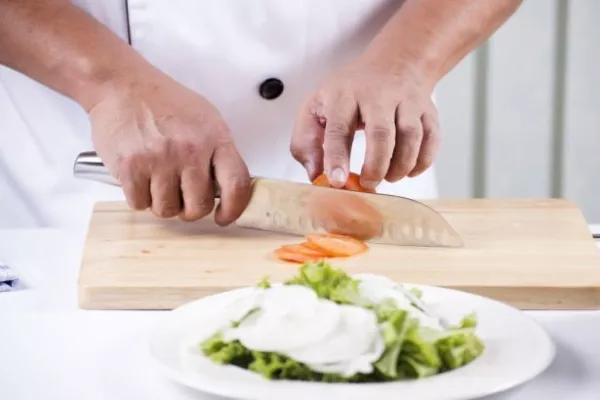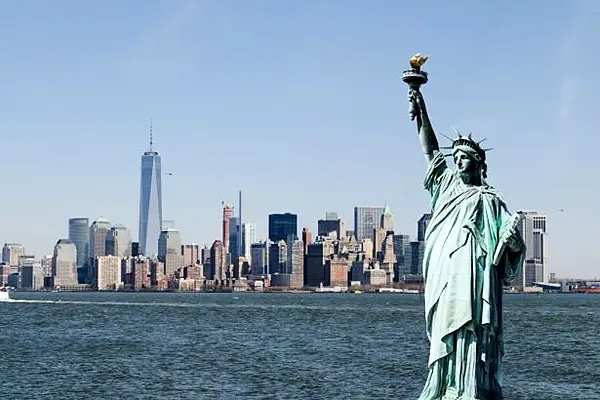For someone obsessed with food terroir and authenticity, Virgilio Martinez is surprisingly tolerant of pre-packaged snacks.
The magnetic co-owner and chef of Central in Lima, who brought a loudspeaker to the conversation about Peru’s cuisine and its place in the world, came by the Bloomberg offices in New York earlier this month to talk about some news in his life. Central had recently landed in the 4th spot on the World’s 50 Best restaurant list and was just named No. 1 for Latin America, and Martinez has plans for a new restaurant and food lab that he wants to tell the world about. So it was with trepidation that I escorted him through the sixth-floor Bloomberg lobby, with its many kiosks of free granola bars, chips, cookies, and trail mix.
"Do you want anything?" I asked.
Martinez and his wife Pia, who does most of the cooking at Central, serve not only exclusively Peruvian food; they’ve created a clever strategy for highlighting the diversity of ingredients all over their country. The menu at Central is unlike any other: Dishes are dictated by altitude. The Diversity of Corn, a mix of different corn varieties, along with honey and passion fruit, is marked on the menu with "120 M," or meters of elevation (a modest 400 feet). “People think those are the prices and freak out,” Martinez says. (At 3900 M, the Andean Plateau—a dish made with tunta, or dehydrated white potato, and annatto seeds—would make them freak out more, while the crab plate, Spiders on a Rock, at -5 M would be runaway best seller.) “We cook ecosystems,” is how Martinez describes his cooking style in his elegant, new cookbook, Central.
Anyway, back to Bloomberg and our own food offerings. Martinez and his sister Malena agreed to survey the snacks, so I steered them toward toasted coconut chips, which are at a little tower with other healthy foods. He grabbed a bag, explaining that he had to explore all manner of regional foods as research for Central. "I think I should try these, too," he said with a smile, as he added a packet of baked snap peas to his stash.
Martinez is predicting that Peru's big global food moment, which has been buzzed about for a couple of years now, will arrive eminently. "Peruvian is going to be huge in Asia—maybe it starts in Japan, maybe Korea," he said, noting that several of the chefs working in Central’s kitchen are from those parts of the world. "When they return home, they’ll bring Peruvian cooking with them." He sees it as a phenomenon similar to the 10,000 chefs around the globe who have spread the gospel of Nordic cuisine because they apparently all cooked at Noma. "They write the most romantic letters to come and work at Central," says Martinez. "And they are the most dedicated cooks."
Next year should also be a big one for Central, perhaps its best ever. For one thing, it is moving to the groovy Barranco neighborhood, with its multitude of galleries and hip bars. He promises that the spirit of the place won’t change, but something bigger is needed. They’re adding a bar to accommodate the crowds that come early, before their bookings at the restaurant, and to expand on the terrific drinks (pisco!) that Central already makes. His wife Pia will also open her own restaurant next door, with an à la carte menu that even Martinez doesn’t know much about. “She’s shy, she’s not telling me what she’s doing,” he said, smiling. But he thinks there will be lots of crudo and ceviches and said she’s experimenting with such Andean ingredients as potatoes, corn, and quinoa.
So is Martinez. Next year, he’s going to open a food lab and restaurant in the Andes, on the edge of a plateau of circular garden terraces dating back to the Incas, called Moray. (Some parts of the terraced areas are deep enough that the temperature can fluctuate almost 60 degrees Fahrenheit from top to bottom.) The place is high up, at 11,500 feet, and remote. Martinez described it: "It's a 45-minute drive into the mountains, and that's after you've taken a one-hour flight from Lima to Cuzco." There, he and his team will research and grow the ingredients that he’s so obsessed with around Peru. “Ten lucky guys will be working there,” he said, along with an array of people such as foragers, botanists, anthropologists, and artists. “There’s a lot of history in a structure like this, but I see the future, too.”
Opening around March, the restaurant will be called Mil (as in thousands, another reference to altitude). Martinez plans on serving up to 60 people at a time in a space with indoor and outdoor seating. He and his crew will cook food found only in the surrounding areas at that high altitude, using only ancient cooking techniques. That means roasting tubers underground with quinoa barks and pachamanca (hot stone)-style, with wild plants for all the corn varieties they'll serve. Martinez envisions guests sitting around the fire pit, eating potatoes—he’ll see how many kinds; Peru produces 4200 registered varieties, approximately half of which come from Cuzco—and multicolored ears of corn that have been cooking on the fire pit coals, with beer. "I see them swimming in a sea of corn," he said. "And then just grabbing an ear and taking a bite."
News by Bloomberg, edited by Hospitality Ireland









